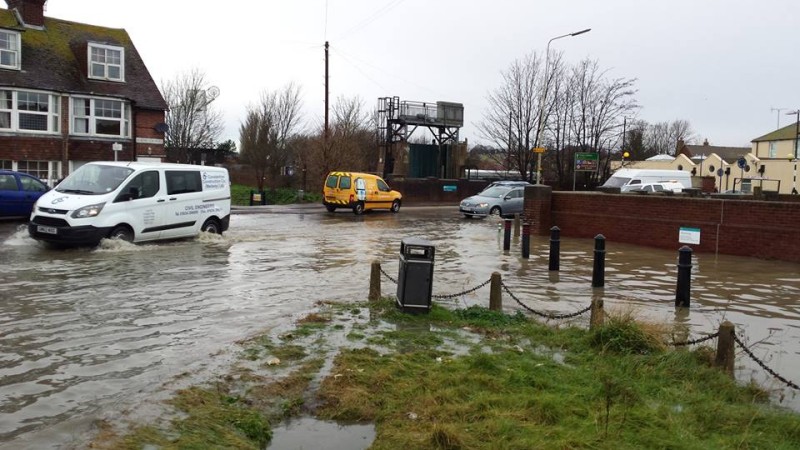On September 1 and 2, we saw “Very High Tides” which were forecast with possible “storm surge”. We will see similar levels at the end of September.
After the high rainfall of August (150mm) this high tidal water can be alarming to the many occupants of dwellings and businesses close to the flood defences or in areas where we have seen localised ponding in the recent past. The water rose to 4.4m (Above Ordnance Datum – the level in Newlyn against which all tides are measured) at the Strand. This is high but well within the levels for which the tidal defences are designed (around 5.7m around the Strand).
In Rye we have a voluntary group (REACT- Rye Emergency Action Community Team) which monitors risks to the community and works with professional partners to provide local knowledge, expertise and help allay fears and concerns in the community. REACT leader, Colonel Anthony Kimber was out meeting with operational staff of the Environment Agency on September 3. These teams monitor all Very High Tides and are prepared to close the flood gates and river sluices when levels reach around 4.8m.
In calm conditions very high tides pose little risk because of recent work by the Environment Agency on the the tidal defences. However, when conditions are more extreme – after heavy rain, when rivers are in flood or during storm surges – then high levels be more alarming and pose more of a risk. We last saw this in December 2013, when very high tides coincided with rain and storm surge to lift levels to 5.1m at the Strand.
These storm surges are caused by high winds pushing the sea water towards the coast combined with low pressure “lifting” water levels. This lift is about 1 cm for every 1 millibar change in pressure: the same effect as drinking through a straw!
The public should be aware that the heightened tidal defence walls, improved sluices (Brede and Strand), efficient storm doors and drain flaps, prevent the flooding of properties near to the rivers. By 2019 we hope to see the defences on the East side of the Rother match that of the western side. This system is a credit to the Environment Agency which plans, builds and operates the mechanisms.
The tidal water defences are part of a much bigger system involving sewers and drains to handle sewerage, river and surface water. When this part of the system overloads we see localised “ponding” in recorded “hotspots” such as the Strand, the Grove, Military Road and Tilling Green. Work continues with bodies such as Southern Water to seek improvements to enable the sewers to better handle the more frequent extreme rainfall which we now experience.
In times of budget cuts, maintenance of the key parts of the sea and river defence infrastructure remains vital. REACT continues to press the professionals, including the Environment Agency for effective maintenance of the tidal defences and REACT is prepared to add value to the contingency plans as and when something goes wrong. (see www.facebook.com/pages/Rye-Emergency-Action-Community-Team-REACT)
Photo: R.E.A.C.T.
Image Credits: Rye News library .



